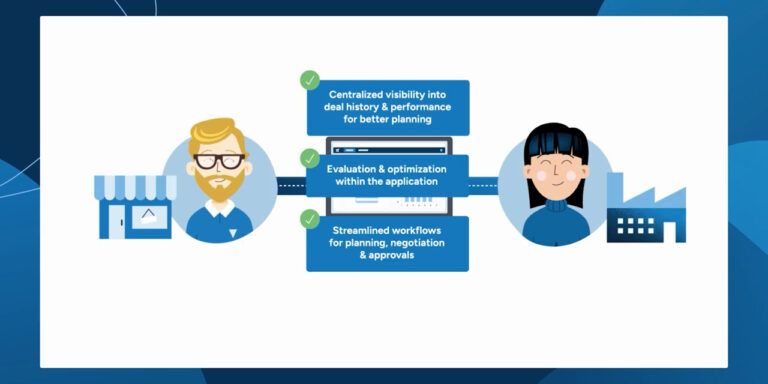Why retailers should invest in pricing technology now: Q&A with an industry expert
Dec 15, 2023 • 6 min
In today’s competitive retail landscape, pricing plays a crucial role in driving profitability, customer satisfaction, and overall business success. We sat down with Jeff Bulger, a pricing expert at RELEX with over 13 years in the industry, to discuss the importance of pricing, why it’s more important now than ever, and why retailers should invest in pricing technology.
In the following Q&A, Jeff shares his insights and experiences on the power of pricing and how choosing the right pricing solution can help retailers stay ahead of the competition.
Q: Why is pricing optimization so important for retailers?
A: (Jeff Bulger) I think there are quite a few reasons that retailers should be paying attention to pricing optimization solutions right now, but I’ll focus on three big ones.
First, pricing is the fastest way retailers can influence their bottom line. By making changes to promotional and base pricing strategies, retailers can quickly affect profitability, change store traffic, and influence consumer demand patterns.
Let’s say, as a company, I make changes this week to my promotional and base-pricing strategies. Assuming we can bring those new prices to the shelf within the week, we can start affecting profitability as early as when that first customer sees that shelf tag.
Second, retailers should look to automate as much of their current planning process as they can. This will free up time for pricing teams to really focus on company strategy.
Rather than all your experts, buyers, category managers, and analysts figuring out how much a retailer should charge for one product, like a pen, they should move from a tactical approach to a strategic one. For example, retailers should be asking where office supplies fit into their objectives and goals for the company. Where do they need to build traffic so that they can build profit or where can they automate with rule setting?
Retailers can set up guardrails and let processes run so that their teams can focus on the bigger things: better positioning in the market, better vendor deals, and better analysis of what they’ve done in the past.
I’m not saying that teams and retailers aren’t skilled enough to do that today, but what I am saying is they don’t have the time to do it.
Third, the industry emphasizes the need for a table-stakes environment—where possessing the essentials for pricing planning is a starting point but having a team capable of executing it effectively is crucial to be competitive. Of course, a main concern raised by any automation technology is: “Will this technology mean I’m going to have to cut people from my team?” And my answer to that is no, they’ll just finally be free to do more impactful work.
Even the best automated system probably brings automation to only about, I actually did the math on this in the past, 81 to 87% of the prices that are suggested. This figure means you still have to have a good team that can look at that other around 20% and decide how to plan those prices strategically.
Of course, some retailers might also ask, “Then why can’t we have a tool to handle everything?” Because there is knowledge within your pricing team that today’s tools simply do not have. The people on your team are the ones who can understand the priorities of your customers, the strategy of your business, and where you want to focus your resources. There is a reason you invest in your people, and this technology offers them the chance to return to the tasks they’re best at puzzling out.
Q: Why has pricing become so important to focus on right now?
A. (Jeff) Pricing optimization is no longer a nice to have. It’s a necessity for retailers to stay competitive. The differentiators in the market will be those who use great pricing tools and apply them strategically, rather than just trying to figure out the next price through gut feeling or an elaborate spreadsheet.
I’ve yet to meet a retailer that wasn’t in a constant state of competition. They will routinely be trying to evaluate, “What do our customers feel about us? What do they think when they walk in the store? Are they walking in for one item so they can get out and then go someplace where the prices are better? Or are they walking up and down every aisle?”
And if everybody else is using a tool that makes them better at pricing than you, then they’re going to knock you down, take your customers, and you won’t even know it is happening. I know your people are smart, they’re dedicated, and they want to do a good job. But without the help of overarching optimization mathematics, AI, and machine learning, the human brain alone just can’t keep up. It’s impossible.
Q: What should retailers consider when looking into a pricing investment?
A: (Jeff) I’m a huge fan of a revenue-neutral implementation, which means that each part of a new technology pays for the part that comes after it. And if that is the case, why not put pricing in first? Or start with forecasting and replenishment (F&R) to get your baseline data and then jump to pricing next? Ultimately, what I mean to express is that you need a technology whose ROI can quickly pay for the implementation and the subscriptions of any other products you bring in afterward.
I’ve had a customer tell me that one of the pricing modules they implemented basically paid for everything. But the internal challenge was that they had to embrace it. They had to embrace the change—because there will be a change. But this change also gives retailers an opportunity to realign the goals and objectives throughout their organization.
If the pricing team is out of alignment with the overarching goals and objectives of the business, everything is going to go in the wrong direction. This is where having an experienced implementation partner to help a retailer reach a more cohesive business practice is critical.
Q: What should a retailer look for in a pricing partner?
A. (Jeff) If you have a good knowledgeable partner, like RELEX for example, they can look at your practices and say, “Hey, maybe we need to reconsider some of our actions.” Not because they were wrong, but because we want to make sure that you’re in sync with what your company wants.
Retailers can ask us, “Help me figure out a pricing strategy that lets hit these goals,” and we can.
During my career working with pricing, I remember one retailer that was worried about a lot of big-name competitors moving into their region. At the time, the retailer was essentially asking for help just to keep their lights on and their people paid. They wanted me to help them figure out a pricing strategy that let them do those and together we did. And we went for profit.
We found the products that were trigger points. We found areas where if they raised their prices their customers would get upset but also found products where we could change the price a little bit and no one would really care too much. In this way, a good partner can support a retailer to not only survive but thrive.
This retailer was making some record profits three years later, so the conversation shifted. This time around they wanted to know, “How do we go after those competitors and gain market share?” They went from thinking they were on life support to wanting to take on their biggest competitors and do it aggressively. And you know what? They did. So can you.
You don’t have to be a major player for price optimization and promotion optimization to be game changers. If you have new competitors coming into your market or you’re worried about staying competitive around the big box retailers, call us.
We can help with that. We can manage that. And you know what? We can make them scared of you.
Q: Any final words for retailers still hesitant on looking into a pricing solution?
A: (Jeff) I’ve seen retailers make the right choices when it comes to investing in pricing optimization. Their customers are happier. They’re happier. They’re making more money, paying for infrastructure, and paying their people a higher wage to keep them around.
A good pricing optimization solution can provide all that — and you know what? Nobody loses. It’s a win-win-win, and there are not a lot of products that can say that. Picking all three winning horses in a race is so rare that they gave it a name — a trifecta. That doesn’t happen a lot, but we see it with pricing technology in the retail world every day.



